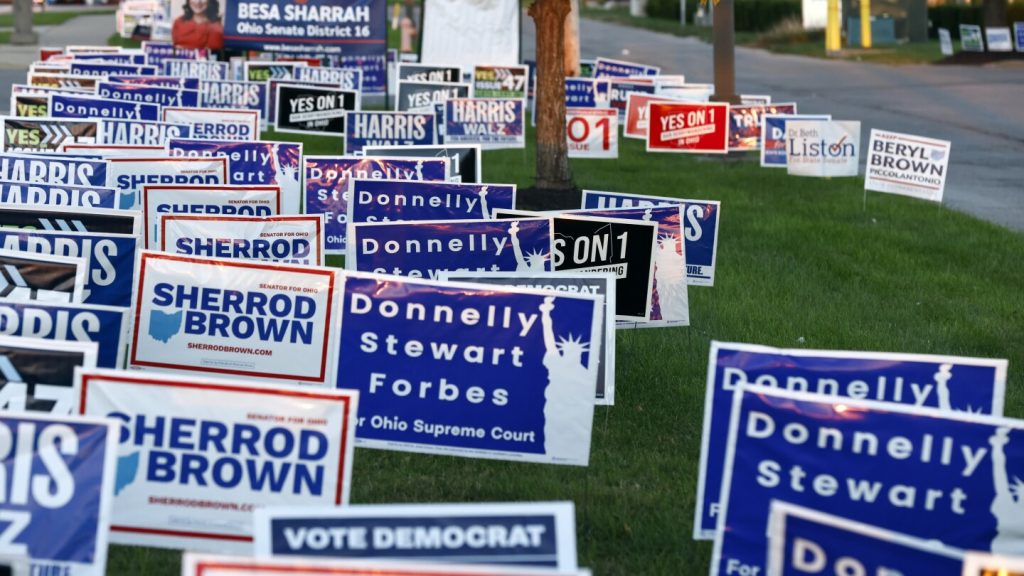In Ohio, the focus of the upcoming Nov. 5 general election is not on the presidential race between Vice President Kamala Harris and former President Donald Trump, but on the Senate race between Democratic incumbent Sherrod Brown and Republican challenger Bernie Moreno. Brown, seeking a fourth term, faces a tough challenge as his party aims to maintain a narrow majority in the chamber. Moreno, a Cleveland businessman supported by Trump, is vying for the seat in a contest that will impact the balance of power in the Senate. Despite Ohio no longer being a presidential battleground, the Harris-Trump matchup looms over this important Senate race.
The race between Brown and Moreno is set to be the most expensive Senate contest this election cycle, with campaigns, parties, and outside groups spending over $400 million on campaign ads. Brown has spent more than $80 million on his campaign, significantly more than the $19 million spent by Moreno. Both candidates entered October with almost equal amounts of cash on hand. Brown had $4.5 million while Moreno had $3.2 million, with Moreno loaning his campaign $4.5 million during the Republican primary. In addition to the Senate contest, two Ohio congresswomen, Marcy Kaptur and Emilia Sykes, are facing competitive challengers in their respective districts.
The 2024 election in Ohio will see important races besides the Senate contest, including the election for President, where Harris faces off against Trump, as well as other candidates from different parties. Key races also include congressional districts and ballot measures to create a citizens redistricting commission. Ohio tends to see a trend where early votes favor Democrats but are trailed by Election Day votes that favor Republicans, ultimately leading to Republican victories in recent elections. Republicans tend to perform strongly in specific regions of Ohio, while Democrats have strongholds in urban areas and certain counties.
The Democratic base in Ohio is concentrated in major cities like Columbus, Cleveland, Cincinnati, Toledo, and Akron, along with some smaller counties. Brown’s chances of winning reelection will depend on his performance in key counties that have supported Democratic candidates in the past. The Associated Press does not make projections and will only declare a winner when there is no scenario that could change the outcome. Recounts in Ohio are automatic in close races, but the AP may still call a race if the margin is too large for a recount or challenge to alter the result. Past election results show a strong Republican presence in certain regions of Ohio.
Overall, the Ohio election landscape for 2024 is set to be competitive, with key races in the Senate, Congress, and ballot measures drawing significant attention and funding. The outcome of these races will impact the balance of power in the Senate and influence the political landscape in Ohio. The state’s voting patterns show a blend of Democratic and Republican support, with key regions favoring different parties. The election night results will be crucial in determining the winners and the future direction of Ohio’s political representation.


